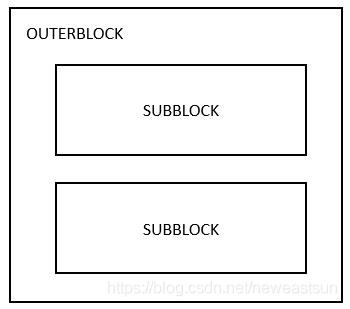本篇文章为大家展示了pl/pgql语句如何在Postgresql中使用,内容简明扼要并且容易理解,绝对能使你眼前一亮,通过这篇文章的详细介绍希望你能有所收获。
Postgresql的pl/pgql用法--将多条执行语句作为一个事务
DO $$
DECLARE
v_id bigint;
begin
--1.
INSERT INTO r_test_a (name, value, unit, mode, uid, create_ts)
SELECT 't_t','','',2,0, extract(epoch from now())::bigint
WHERE NOT EXISTS (SELECT id FROM r_test_a WHERE name = 't_t' AND value = '' AND unit = '' AND uid =0);
--2.
SELECT id into v_id from r_test_a WHERE name = 't_t' AND value = '' AND unit = '' AND uid = 0;
--3.
DELETE FROM r_test_b a WHERE a.obj_id = 'xxx' AND a.file_id = 'ooo' AND a.id IN (SELECT id FROM r_test_a b WHERE b.name = 't_t' AND b.uid=0);
--4.
INSERT INTO r_test_b (id, obj_id, file_id, create_ts) SELECT v_id,'xxx','ooo', extract(epoch from now())::bigint ;
end
$$;补充:PostgreSql 的PL/pgSQL 块结构 (在pgAdmin查询工具中如何执行语句块)
本文我们学习PL/pgSQL结构块,包括如何写结构块和执行结构块。
什么是结构块
PL/pgSQL是结构块语言,因此,PL/pgSQL函数或过程是通过结构块进行组织。完整结构块的语法如下:
[ <<label>> ]
[ DECLARE
declarations ]
BEGIN
statements;
...
END [ label ];详细说明如下:
块有两部分组成:声明部分和主体部分。声明部分是可选的,而主体部分是必须的。块在end关键字后面使用分号(;)表示结束。
块可以有个可选的标签在开始和结尾处。如果你想在块主体中使用exit语句或限定块中声明的变量名称时,需要使用块标签。
主体部分是编写代码的地方,每条语句需要使用分号结束。
下面示例描述一个简单块结构,一般称为匿名块:
DO $$
<<first_block>>
DECLARE
counter integer := 0;
BEGIN
counter := counter + 1;
RAISE NOTICE 'The current value of counter is %', counter;
END first_block $$;运行结果:
NOTICE: The current value of counter is 1从pgAdmin中执行块,点击图示按钮:

注意DO语句不属于块结构。它用于执行匿名块。PostgreSQL 在9.0版本中引入DO语句。
在声明部分定义变量counter并设置为0.
在主体部分,是counter值加1,通过RAISE NOTICE语句输出其值。
first_block 标签仅为了演示需要,本例中没有啥意义。
** 什么是双 ($$) 符号?**
($$) 符号 是单引号(')的替代符号。开发PL/pgSQL 时,无论是函数或过程,必须把主体部分放在一个字符串中。因此必须对主体部分的单引号进行转义表示:
DO
'<<first_block>>
DECLARE
counter integer := 0;
BEGIN
counter := counter + 1;
RAISE NOTICE ''The current value of counter is %'', counter;
END first_block';使用($$) 符号可以避免引号问题。也可以在$之间使用标识,如之间使用标识,如之间使用标识,如function$ , procedureprocedureprocedure.
PL/pgSQL可以一个块在另一个块的主体中。一个块嵌入在另一个块中称为子块,包含子块的块称为外部块。

子块用于组织语句,这样大块能被分为更小和更多逻辑子块。子块的变量的名称可以与外部块变量名称同名,虽然这在实践中不建议。当在子块中声明一个与外部变量同名的变量,外部变量在子块中被隐藏。如果需要访问外部块的变量,可以使用块标签作为变量的限定符,如下面示例:
DO $$
<<outer_block>>
DECLARE
counter integer := 0;
BEGIN
counter := counter + 1;
RAISE NOTICE 'The current value of counter is %', counter;
DECLARE
counter integer := 0;
BEGIN
counter := counter + 10;
RAISE NOTICE 'The current value of counter in the subblock is %', counter;
RAISE NOTICE 'The current value of counter in the outer block is %', outer_block.counter;
END;
RAISE NOTICE 'The current value of counter in the outer block is %', counter;执行结果如下:
NOTICE: The current value of counter is 1
NOTICE: The current value of counter in the subblock is 10
NOTICE: The current value of counter in the outer block is 1
NOTICE: The current value of counter in the outer block is 1首先,在外部块中声明变量counter。
接着在子块中也声明了一个同名变量。
在进入子块之前,变量的值为1。在子块中,我们给变量counter值加10,然后打印出来。注意,这个改变仅影响子块中counter变量。
然后,我们通过标签限定符引用外部变量:outer_block.counter
最后,我们打印外部块变量,其值保持不变。
上述内容就是pl/pgql语句如何在Postgresql中使用,你们学到知识或技能了吗?如果还想学到更多技能或者丰富自己的知识储备,欢迎关注亿速云行业资讯频道。
亿速云「云服务器」,即开即用、新一代英特尔至强铂金CPU、三副本存储NVMe SSD云盘,价格低至29元/月。点击查看>>
免责声明:本站发布的内容(图片、视频和文字)以原创、转载和分享为主,文章观点不代表本网站立场,如果涉及侵权请联系站长邮箱:is@yisu.com进行举报,并提供相关证据,一经查实,将立刻删除涉嫌侵权内容。